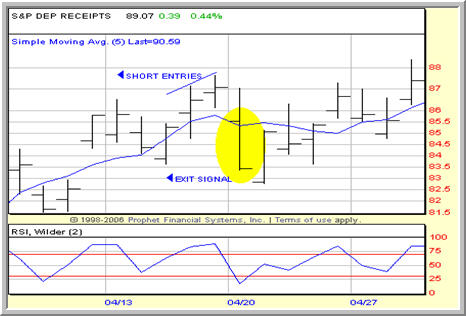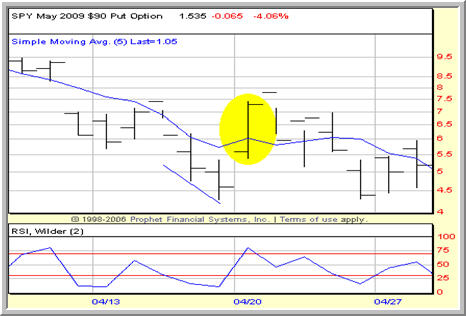Trading Options, Trading ETFs, Part 2
In part 1 Trading Options, Trading ETFs, I pointed out that traders who use our high probability ETF trading strategies can take advantage of the options market to make the very same high probability ETF trades using options.
The easiest way to use options with our high probability ETF trading methods is as ETF substitutes. In other words, instead of buying the SPY, an ETF trader may decide to buy SPY call options. For many ETF traders, using options is the perfect compliment to our high win-rate, mean reversion trading approach.
Also in part one, I noted that when traders are using options as ETF substitutes, we recommend that traders use deep in the money options. Deep in the money options more closely track their underlying asset compared to at the money or out the money options.
In today’s article, I want to show you how traders can use options to trade our high probability ETF trading strategies. Insofar as we have been in a bear market for several months, the example I will use will involve an overbought ETF and a sell short signal.
S&P 500 SPDRS: Two days of overbought conditions below the 200-day moving average (not shown) provide an opportunity to take short positions in the SPY in mid-April. The sell-off, and profit-taking, came swiftly.

The S&P 500 SPDRS ETF
(
SPY |
Quote |
Chart |
News |
PowerRating) closed in overbought territory below the 200-day moving average on April 16. With options expiration right around the corner, our trader decides to trade this opportunity using May puts. With the SPY closing at 86.50 on that day, our trader decides to buy the May 90 puts, which are well in the money. The May 90 puts on April 16 closed at approximately 5.10.
The following day, the SPY closes higher still – and even more overbought below the 200-day. This means it is time for our trader to add to the short position, buying more May 90 puts. On April 17, the May 90 puts closed at approximately 4.60.
On April 20, the SPY sells-off and closes below its 5-day moving average. This, as you remember from our series, “How to Exit an ETF Trade,” is among our chief exit signals and the one our trader uses in this trade. The exit comes at the end of the day, and our trader sells his May 90 puts on the close for a price of approximately 7.30 each.
The gain on the trade? The cost of the trade was 9.70 or $970. The trader received, not including fees, 14.60 upon selling the puts for a gain of 4.90 or $490.
S&P 500 SPDRS May 90 puts: This options chart of the May 90 puts shows where a trader would have bought puts and the level at which those puts would have been sold in our sample trade.

This trade is presented as an illustration of how traders can use in the money options to trade high probability ETF strategies. The trade would work essentially the same way if the trader was looking to take a long signal in an oversold ETF by way of call options: buying deep in the money calls, buying additional options if and as the ETF pulled back further and exiting the options when the exit signal for the ETF is issued.
Buying deep in the money options is just one way that ETF trader can use options to trade ETFs. Click here to continue to part 3 of Trading Options, Trading ETFs where we will begin to look at more advanced options strategies for trading ETFs and managing risk such as credit and ratio spreads.
According to a recent report, eight out of ten securities traded are exchange-traded funds. Want to learn how to trade them? Click here to order High Probability ETF Trading,the first quantified book of trading strategies to improve your ETF trading.
David Penn is Editor in Chief at TradingMarkets.com.
